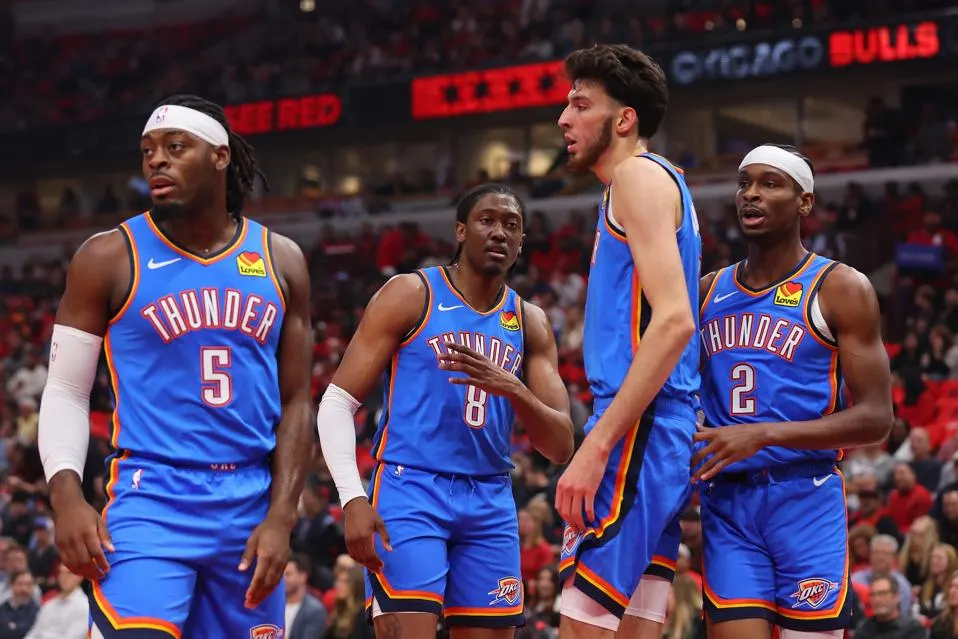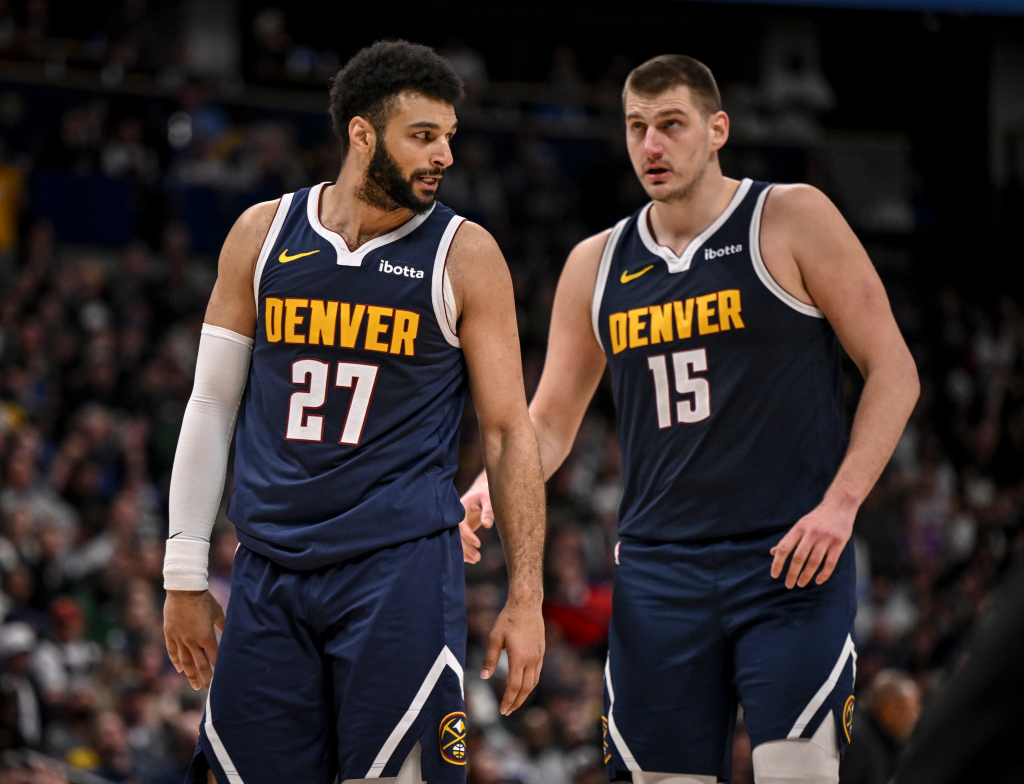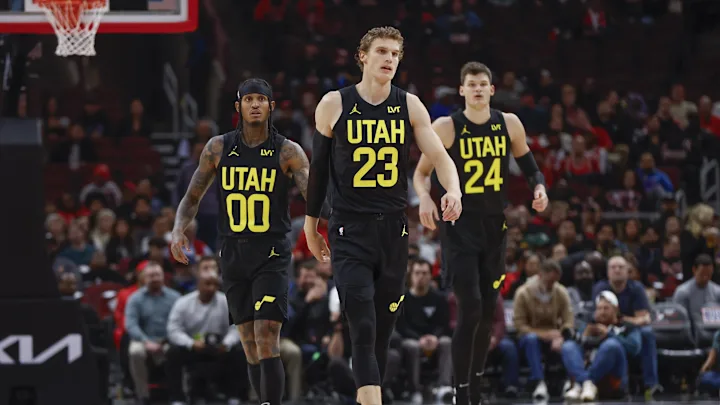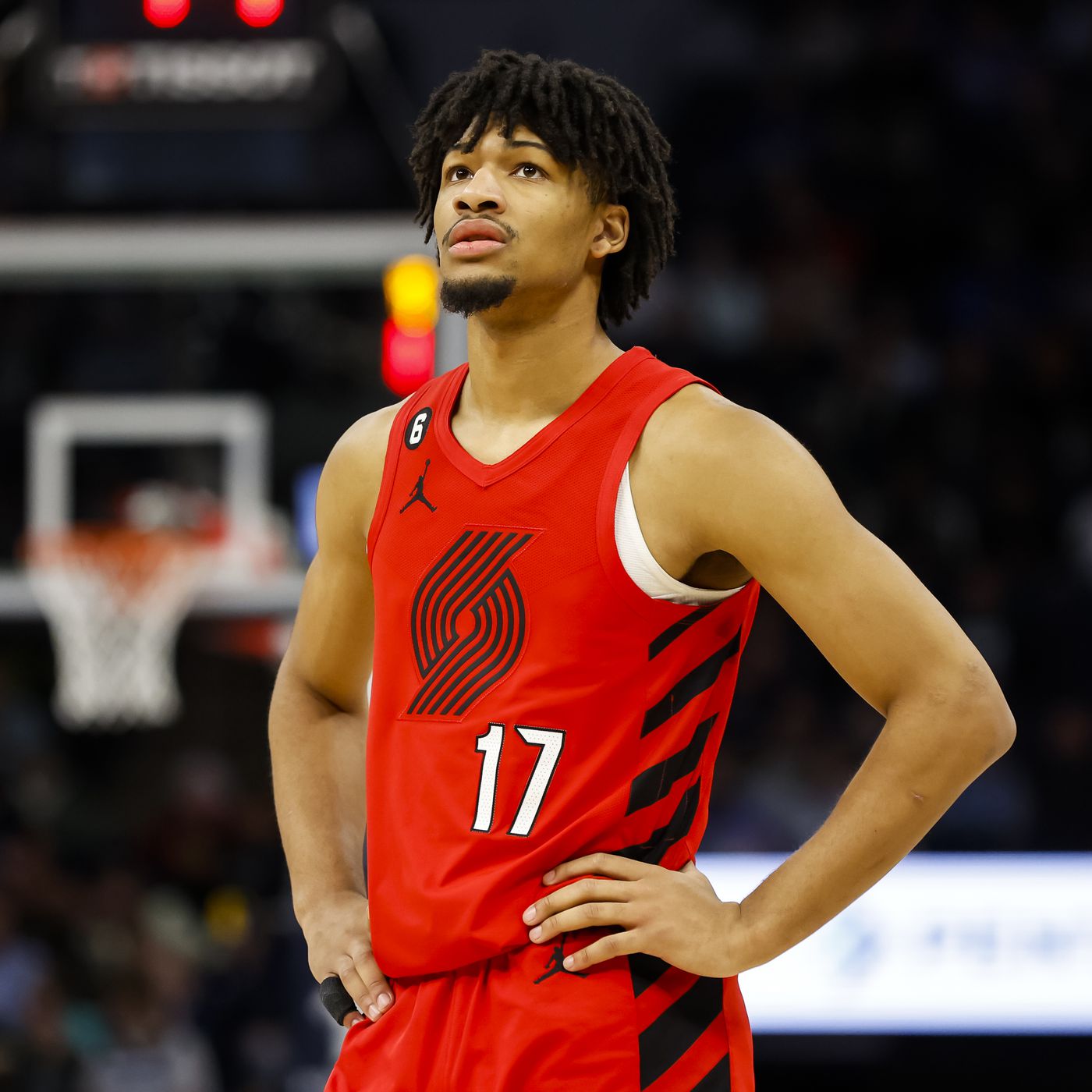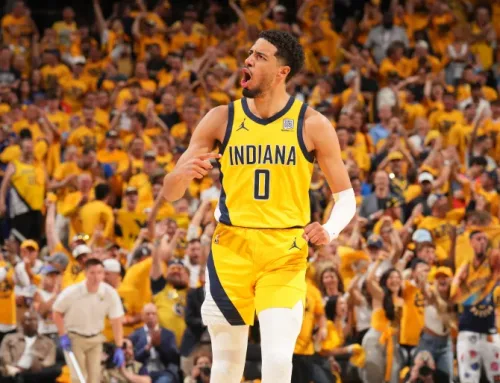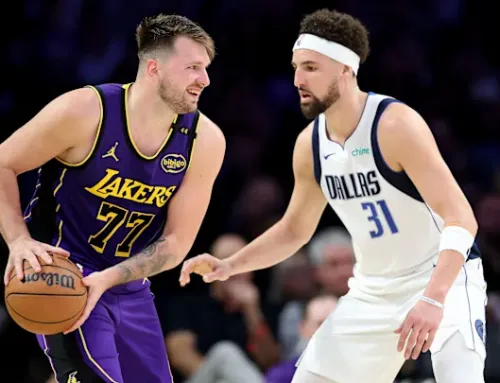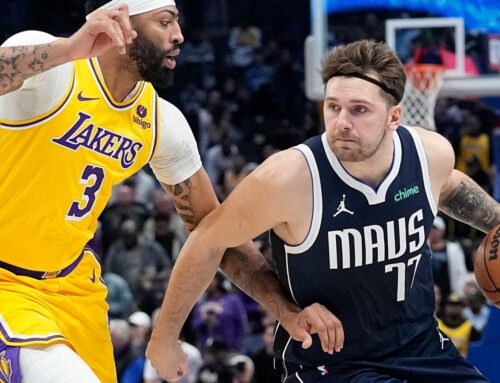By Avi Tyagi
Welcome to the final edition of our NTC season preview series! Over the next several weeks, we have been attempting to bring you the most in-depth analysis possible about all 30 teams in both written and podcast formats leading up to the tip-off of the 2024-25 NBA season. We have split the segments up by division, and have provided previews for five teams per week for a total of six weeks. Within each team preview, you will find a short recap of how they finished their 2023-24 seasons, key players to watch, what their goals for next season might be, and more. We hope you enjoyed the ride. Feel free to contact us with any questions or comments you may have! With that being said, let’s bring this series to a fitting conclusion.
Previous Division: Central
The division of the haves and the have-nots. The Northwest is a division divided. On the high end, we have our two plausible young contenders and a former champion who combined for 170 wins and the top 3 seeds in the West last season. In the other corner, we have the tanking Jazz and Blazers. The Jazz started 22-20 before wilting over the second half of the season with a 7-30 stretch that included a 13-game losing streak. Portland started poorly and only got worse over time. At the end of January, the Trail Blazers were 15-33. Poor, but not noticeably awful compared to some of the teams out east. Not so fast! The Blazers went 4-23 through April 1st and ended the season with the 2nd worst Cleaning the Glass point differential in the league. Not amusing if you’re a Portland fan. To make matters worse, in a draft with a questionable depth of high-end talent, neither team received a top-6 pick in the draft lottery. With the 2025 draft projecting to have several franchise cornerstones, the tank is back on for these two organizations. For their division counterparts, it’s time to win it all.
OKC Thunder
2023-24 ranks:
Offensive Rating – 3rd (119.5)
Defensive Rating – 4th (112.1)
Net Rating – 2nd (+7.4)
Weighted Age – 29th (23.4)
OKC already took its big leap last season. This year is about consolidation. After a scintillating season where they ran resolutely to the rim and ran over the conference, the Thunder truly took on the identity of their star player. Shai has already been the leader in drives per game for every season since and including 2020-21. He’s been a phenomenal and efficient shot creator in years past as well. All he did last season was crank the dials just one more extra step. The most notable difference in Shai’s game came at the paint. Shai has always been masterfully crafty and patient so it’s hard to tangibly point to anything tangible particularly new. Another year of Shai getting slightly stronger, the improved spacing dynamics of having Chet on the court all year, and even more patience when exploiting mismatches all made a big difference. In 2022-23, Shai shot 60.3% within 5 feet of the hoop, in 2023-24, Shai shot 66.5% within the same region. Plays like these showed the extra element of Nash-like craft and trickery he’s mastered over the years.
In the same game, he also trucked his cousin on the spin move here with the grace of a receiver breaking a tackle.
The Shai for 3-4 years ago might not have the core strength and balance to finish this move off, but that’s what constant improvement hidden away in a small market can earn you. Defensively, empowered by being flanked by two of Dort, Cason Wallace, and Jalen Williams all time, with Chet the full fledged apex predator lurking behind him, ready to swat shots away, Shai also began throwing caution to the wind to pursue steals. I don’t mean to imply that he was truly gambling, but more that his quick hands led to a high rate of deflections and plenty of steals per game in a way that would perhaps somewhat oversell the actual impact of his defense. 2.8 steals and 1.3 blocks per 100 possessions were career highs. Shai also cut his turnovers per game, but once again it’s easy to almost pin that as a secondary effect of having Chet and 5 out spacing on the court most of the time. The 2023-24 version of the OKC Thunder already almost perfectly complemented Shai and Jalen Williams’ skill set. Enter the new additions.
Even in preseason, it’s become so apparent what a wonderful fit Hartenstein and Caruso will be for the OKC Thunder. OKC was 27th in the league in rebounding per game in the regular season (be it per game or per 100 possessions). While NBA media spent way too much time as a collective despairing over OKC’s scrawny big man and worrying this team wouldn’t be able to rebound in the playoffs, that frankly wasn’t the primary reason they lost to Dallas. It was definitely a leading factor as Gafford and Lively (two solid if unspectacular regular season rebounders) combined for 33 offensive boards in a 6 game series. Chet and Jaylin Williams by comparison had 13. And yet, that wasn’t what ended their season. The fact of the matter is OKC’s 3-ball escaped them when they needed it most. As a team, OKC isn’t filled with natural pull-up 3 point shooters. Shai’s unorthodox shooting mechanics, play style, and body build are built for precision in the mid range game, but it’s hard to ask the strong lanky shot creator with a low release to become Luka Launch-It in a playoff setting. Jalen Williams has the potential to become that player, but he wasn’t that in year 2. Isaiah Joe is that guy, but he wasn’t offering enough in almost every other part of his game to validate staying on the floor for a starter’s load of minutes in a playoff setting. Thus, OKC became dependent on Chet, Dort, Aaron Wiggins, and company to knock down the 3s created for them. It did not go well. As a team, the non-Shai-Jalen-Cason members of OKC shot 38 of 137 from deep. 27.7% from 3. Yikes! That just can’t cut it against an eventual NBA finalist and a couple more 3s here or there might have changed the course of the series entirely.
The good news is Oklahoma has added solutions. Josh Giddey was so poor as a 3-point shooter and so limited offensively without the ball in his hands in a playoff setting with 2-3 better options on the court at all times, that he was eventually benched and practically stowed away. Instead, now we have Alex Caruso. Caruso is minute-for-minute, pound-for-pound arguably the best defender in the league. 6-foot-5 guards shouldn’t be able to block 1.7 shots per 100 possessions, yet he does. His sense of timing, lateral agility, recognition of opponent’s favorite moves, and sheer competitiveness have always been A1 Elite. But last season, he showed something else offensively. With LaVine hurt most of the year and still no Lonzo, the Bulls lacked primary ball handlers. DeMar and Coby were great but you would love to run sets with both players off the ball at times. Alex stepped up. In the best season of his (should-already-be) illustrious career, Caruso increased the rate of self-created 2 point shots, and significantly increased his rate of 3 point shot attempts with no ill effects. Caruso shot almost 41% from 3 on 8 per 100p, and has a long standing track record as a 38% shooter. The most impressive part of Caruso’s shooting: he shot only 40% from the corners last season and those only constituted around a third of his attempts. In other words, Caruso shot a high volume of 3s from the wings and above the break and made a little over 41% of them. That’s the sort of shooting OKC needed. This fully formed weapon was a plus minus darling last season, and it makes perfect sense that OKC chose to go all-in on him specifically. Against most lineups, he’s the perfect 5th starter. If Dort’s not finding his footing offensively in a series and you need Hartenstein or Isaiah Joe, great put in Caruso. If you want him to come off the bench, he’s happily done that for years. A team-first player, a culture definer, a spectacular player. And then, Oklahoma went and spent big money to sign the best free agent center available and a true sub-All Star caliber player.
I already discussed why I think IHart might be a breakout on the NTC podcast, but there’s so much untapped potential here. It took one and a half preseason quarters to show the extra element he can bring as a passer. This little reel of plays is a snapshot of everything. If IH is the central focus of the surrounding solar system on a given play, it means Chet doesn’t have to be. Chet can then be an orbiting planet, looking to cash in on the runways presented with his handle and athleticism. Guards like Caruso and Cason Wallace who aren’t comfortable shot takers have a large, excellent passer and screener to play off. The Joe-IHart handoff action will feed niche NBA Twitter. And when all else fails, Hartenstein can put the ball on the deck to generate pressure on opposing bigs and force help, then capitalize on a closeout. Plus, he’s a fantastic offensive rebounder (4th on a per 100 possessions basis league-wide among qualified players) and, when he returns from injury, he can handle a role as a 5th starter against intra-division matchups like Denver and Minnesota. OKC has no regular season weaknesses anymore (other than injury). This team can win 60 games this season and is my favorite to not only earn the 1 seed but also win the championship. I think their size and personnel matchups well against teams like Dallas and Boston now that they have Caruso adding pressure to primary ball handlers. Dort is great, but that’s never been his strong suit. Caruso thrives on matchups against bigger players and Tatum would be a perfect foil for his particular set of skills. One round at a time, Oklahoma City has a top-5 coach, a top-5 player entering his prime, two emerging All-Star caliber players, and a dynamite and versatile supporting cast (reminder that Wiggins is a nice cutter and Dillon Jones is a nice power forward prospect). It’s dynasty time.
Minnesota Timberwolves
2023-24 ranks:
Offensive Rating – 16th (115.6)
Defensive Rating – 1st (109.0)
Net Rating – 3rd (+6.6)
Weighted Age – 21st (27.2)
We’ve already extensively covered the Randle and Donte for Karl trade in an hour long podcast. Instead, let’s tread new ground. What have we already learned from the preseason about what they might do with Randle this season and how the lineups might have to adjust. My big takeaway from the one preseason game Randle played (Bulls-Timberwolves) was not actually Randle. I thought he was fine and I think he really did add an extra element as a driver. No, my primary takeaway was are the unintended consequences for AE5 larger than I thought? Even against the preseason Bulls (more lethargic than even the normal Bulls might be), AE seemed content to take contested or pull up jumpers. That’s a little scary. On almost every possession where AE shared the floor with 2-3 starters, the paint was just so crowded with a tangle of sagging defenders and a sea of hands and legs that Edwards chose the jumper as his weapon of attack. That’s not what you love to see. For his career, Edwards is a 33% deep mid-range shooter and 35% from 3. That’s not where he gets his trademark efficient Edwards’ offense from. You can understand how it happens though. Jaden McDaniels shot 34% from 3 last season, no one will ever worry about Randle as a shooter, Gobert is a total non-shooter, Conley is only a stationary corner shooter at this point. This team already struggled with the math portion of the game when they had Karl. Minnesota was 22nd in the league in 3s attempted per 100 possessions and teams like the Lakers, Pelicans, and Suns are clear candidates to leapfrog their attempt rate this season. Nickeil Alexander-Walker is a career 35% 3 point shooter who shoots 73% from the line. He shot 39% last season. Randle’s best shot at becoming a capable 3 point shooter would be to cut down volume and focus on taking corner 3s. But that would strand Jaden McDaniels or NAW. Conley is a flamethrower from the corners and the only true ready-made point guard on this roster so he has to play. You start running into problems super fast. Before you know it, your offense is struggling, and ex-players are criticizing the team for a lack of cohesion as a symbol of poor unity or coaching rather than acknowledging the importance and difficulty of the skill of 3-point shooting. No matter how you slice it, Donte and Conley are the most natural fits in lineups with Edwards and perhaps the only way to make an offense conducive to AE and the Timberwolves success is to stagger Jaden, Edwards, and Randle 2-at-a-time at all times. Leaving aside the sheer Bulls-iness of this apathetic defense, there are 5 players in or near the paint when Edwards receives the screen from Gobert on this play. You can’t live like that on offense. And I say that despite strongly believing that this roster can repeat as the number 1 defense in the league. Per Cleaning the Glass, they were 1st by almost 3 points per 100 possessions. I don’t love Randle’s defense but I have to say his mobility is a solid upgrade from Karl (although Karl provides shot blocking in a way Randle simply lacks the secondary jump and length to replicate). Losing Kyle Anderson is not ideal, but preseason Josh Minott looks ready to step into his place and to be just as disruptive (if not more) as a defender. Replacing Monte Morris and Shake Milton minutes with time for Donte DiVincenzo makes a substantial difference too. Rob Dillingham and Terrence Shannon Jr. will probably spend most of their time in the G League but they can provide an offensive spark while still being comparable defensively to their 2023-24 counterparts (Jordan McLaughlin and Troy Brown Jr.). Minnesota was an average offense last season despite having Towns. If they can’t get rotations right, they could be even worse this season. An additional factor: Per NBA.com data, the Pelicans, Timberwolves, and Rockets benefitted the most last season from opponent 3 point shooting variance on open or wide open 3s. All it takes are these tiny little shifts back to the pack, and a good roster can fall from 56 wins to 53 or 52 wins in a loaded conference.
With all that said, I think there are still solutions. Here are 6 of the T-Wolves most effective lineups last season from the regular season or playoffs.
Conley-Edwards-Jaden-Karl-Gobert
NAW-Edwards-Anderson-Naz-Gobert
Conley-NAW-Edwards-Karl-Gobert
NAW-Edwards-Jaden-Karl-Gobert
NAW-Edwards-Jaden-Naz-Gobert
Conley-Edwards-Jaden-Naz-Gobert
As you can see, there are two common elements. Every successful lineup has both Edwards and Gobert. The good news: they’re still here. The last two lineups mentioned on that list are still on the table next season. My guess is lineups with Randle need to feature Edwards and two other shooters to be effective. Naz Reid is a good, high-volume shooter who pairs well with Jaden McDaniels. On top of that, the combination of Edwards, Jaden, and NAW paired well with Gobert and Naz in a small sample last season (+43.9 net rating per 100 possessions in 44 minutes last regular season). You could pump up the volume on that configuration. Here are what I expect to be 6 of the best T-Wolves lineups:
Conley-Donte-Edwards-Randle-Gobert
Conley-Donte-Edwards-Naz-Gobert
Conley-Edwards-Jaden-Naz-Gobert
NAW-Edwards-Jaden-Naz-Gobert
NAW-Donte-Edwards-Randle-Gobert
Donte-Edwards-Jaden-Randle-Gobert
You maintain Minnesota’s defensive backbone in all those lineups, but also find effective ways to provide supplementary shooting to open driving lanes for Edwards at all times. I expect Minnesota to start with Donte off the bench in favor of Conley, but it wouldn’t shock me if the older Conley was brought off the bench at some point. It also might not matter because Finch is a fantastic coach and can easily stagger lineups to maximize the effectiveness of the roster. Minnesota should be competing for a top 3 seed yet again.
Denver Nuggets
2023-24 ranks:
Offensive Rating – 5th (118.5)
Defensive Rating – 8th (113.0)
Net Rating – 4th (+5.5)
Weighted Age – 20th (27.1)
It’s time to press the panic button on Denver. New CBA or not, this team could not afford to lose KCP without a viable replacement. Denver won 57 games almost primarily built around their starting lineup. Per CTG, Denver’s starting lineup played more non-garbage time possessions than any lineup last season (over 1900). Their +13 net rating per 100 possessions was significantly better than any other lineup to play more than 1400 possessions last season. KCP filled an incredibly difficult role on a personal level. Surrounded by AG, Jokic, MPJ, and Jamal, your job is to be the clear 5th option, shoot and make 3s on a team with a bottom 5 attempt rate, master screen navigation and isolation defense to be the apex perimeter defender capable of protecting Jokic, MPJ, and Jamal if they’re ever brought into the action. On top of that, if the offense stalls and the ball is in your hands somehow, we need you to be capable of shot creation every once in a while and still be a decent passer. KCP filled all those boxes for multiple seasons. The Nuggets have no replacement like him. 41.5% from 3, a greater than 2:1 assist to turnover ratio, a 14% usage rate, and 3.8 assists per 100 possessions. Those are just the box score stats on offense from KCP over the last 2 seasons. It doesn’t even cover his defensive activity. Among Nuggets to play more than 1000 minutes last season, only Jokic and KCP averaged more than 3 deflections per 48 minutes. They have no obvious replacements. Westbrook is an upgrade over Reggie Jackson and Dario Saric can be an upgrade over Zeke Nnaji (a glaring trade candidate), but you can’t replace KCP with Braun or Watson or Strawther. Braun might have shot 38% from 3 last season, but he’s not that kind of shooter. KCP has shot 86% from the line over the last 6 seasons and has shot 42.5% from the corners in the same time span. Braun is more of a 75% from the line type of player and he’s shot 34% from the corner over 2 seasons. That matters!
Braun is great as your 7th or 8th man the way he was for the championship Nuggets. He’s just not a 5th starter for this type of team. The Nuggets did a great job of developing Peyton Watson to upgrade on the Jeff Green minutes from the ring-winning roster, but they still had no replacement for Bruce Brown and now KCP is gone too. Westbrook is a good player, but you can’t play him and Jamal together defensively and he doesn’t solve your 3 point shooting math problem. Long term, I liked the choice Calvin Booth and company made to lock up Aaron Gordon on a 4-year extension (with a player option) before Opening Day. The extension offers financial flexibility for the next two years and ensures AG stays at least another 2 seasons at his max salary. Gordon can’t shoot 3s and isn’t the fleetest of foot defensively, but is a plus player in every other regard. His chemistry with Jokic from lingering in the dunker spot has created a steady stream of rim attempts for the league’s most creative passer. For what will amount to between 14-18% of the league cap, Gordon offers skills as a secondary shot blocker, vertical spacing, tertiary passing, and solid defense against opposing forwards that can’t otherwise be replaced. Murray, Jokic, and Gordon are all tied to this franchise through 2027-28. If Denver struggles this year, I expect Nnaji to be traded by the deadline and for Michael Porter Jr.’s contract to be shopped by the organization next offseason. I think Denver gets sucked into the play-in mix this year, even if Jamal Murray looks more like himself and less like he did with Team Canada. Even in preseason, Denver outscored opponents by 15 points in 93 minutes with Jokic on court. In the 147 minutes without him, Denver was outscored by 73 points. Great teams rise and eventually, great teams fall. At least for now, this is the fall.
Utah Jazz
2023-24 ranks:
Offensive Rating – 17th (115.5)
Defensive Rating – 30th (120.4)
Net Rating – 23rd (-4.9)
Weighted Age – 9th (25.1)
We have entered the Rags for Flagg portion of our proceedings. Utah will be a young team and they will probably not be very good. I expect a lot of minutes for Taylor Hendricks, Cody Williams, Keyonte George, Brice Sensabaugh, Isaiah Collier, and Kyle Filipowski. It’s a roster clearly in transition and Lauri Markkanen and Collin Sexton feel like the odd men out. Clarkson and John Collins are older veteran players who can provide a baseline support system and floor for the young players to develop. Walker Kessler is what he is, a shot stopping phenom who might have to come off the bench because of extreme offensive limitations. Lauri and Sexton don’t fit. These are excellent players, coming off career years, in the primes of their career who should be major pieces for playoff teams. After years of promise and flashes of excellence, Collin finally put everything together last season. He found synergy with Dunn, George, and John Collins, all new additions to the team. The extra spacing from playing Collins and Lauri in the front court opened up driving lanes for him and made reads easier for him. On top of that, playing so frequently with George or Dunn meant he got to share the court with bigger point guards who could masquerade as off-ball guards when the ball was in his hands or play as the primary decision maker to allow him to enter sets as an off-ball player. It was a career year from the line (85.9%), career year from 3 (39.4%), career year at the rim (74.4% finishing from a small guard is awesome), and most importantly career year as a passer (8.9 assists per 100 possessions beats his career best of 6.1 per 100 by far and it came with a similar frequency of turnovers). This was the prince who was promised. Sexton enters his age 26 season as a great player who might stick on this roster post-trade deadline only because it’s hard to find too many playoff contender suitors who are missing the small combo guard archetype with a drive-first game he fills. The hope is the downgrade from Dunn to Collier doesn’t negatively impact his play and he gets to build upon what he did last season. If he can keep up that level of play and cut down some of the lost ball turnovers he had simply as a handler, he might reach the sort of efficiency required to warrant a trade. I’d be interested in seeing him in San Antonio if CP3 is injured or too creaky offensively and if Devin Vassell looks like he needs some secondary help on the perimeter scoring front. Otherwise, it’s tough to find a real suitor. Lauri on the other hand, has All-Star pedigree and can tie a room together with his shooting prowess. He’s not a natural passer and it’s hard for me to say he improved last year in that regard. Rather, I think being more comfortable as a ball handler in traffic due to increased comfort in his role as the #1 and a better surrounding ecosystem were integral to another step up from Lauri last season. Will Hardy runs one of the most fun offenses. Their 5-out flare screen offense is oriented around a Larui-Collins front court. Half a season of Kelly Olynyk meant Utah played with impeccable spacing in almost all the minutes Lauri was on the court. Giving him easy reads and outlets help minimize some of his weaknesses. On top of that, every once in a while he’d pull out a lob pass like this one to a vertical spacer such as Collins or Kessler.
I have no idea long term, just how high Lauri can climb but I’d want him to continue to be supported in a nurturing ecosystem so he could explore the limits of his abilities. Lauri created fewer shots for himself last season than he did in his All Star campaign. While that may have improved Lauri’s effectiveness and spared some extra energy that he funneled into being more disruptive defensively (1.3 steals per 100 possessions, up from 0.9 the year prior), I want to see if The Finnisher has more to offer long term. Can he develop his passing and ball handling more over time to become a closer facsimile to Kevin Durant? Or is this what he is. I’d love to find out but if Utah’s youth impedes upon his growth, then I think Ainge eventually will trade him. With the Mikal Bridges trade as precedent, the price will naturally be steep and perhaps it will be an offseason move, but someone would likely want to acquire a star 27-year old who you can run offense for off-ball without needing to funnel a heavy quantity of touches towards. Once again, San Antonio is worth keeping in mind. The Magic and Warriors are also worth watching. There would be more teams, but few teams are in the position to need to acquire Markkanen right now and have the assets to make it happen. Enough about hypotheticals, let’s talk about the current roster.
This team is rough. Keyonte George was a work in progress and had a tough time getting to the rim. Brice Sensabaugh’s defense has historically drawn comparisons to turnstiles and he’s another mid range merchant. Cody Williams is talented but is in the Work in Progress state of their development and are likely to be significantly below-average NBA players (most rookies are). Kyle Filipowski is a proven player at the college level, but questions about his fit at the NBA level as a 4 or a 5 caused him to slide into the 2nd round. We have yet to ascertain whether he can slide well enough to be a 4 or physically match up on defense or finish at the rim on offense well enough to be a 5. Isaiah Collier will likely start out working on his ability to read the floor as a point guard and on his shooting and ball handling in G League minutes, but will probably become a Tank Commander in the second half of the season. The young player to watch, in my eyes, is Taylor Hendricks. The former 9th overall pick enters his sophomore season having had a rookie season far from any spotlight or national attention. Most fans would have never seen him play for the big squad; he was injured for large swaths of the season and only received significant sustained playing time during #TankWatch. Hendricks is a 3 and D power forward and he lived up to the billing in his limited run as a rookie. A strong sophomore season, where Taylor becomes a more important offensive focal point and improves his ability to attack quickly for more rim attempts and cuts down his fouling on defense, could help spur a Lauri trade. Utah will be bad but the offensive architecture is so beautiful and Lauri and Sexton are so talented that they probably won’t finish last in the conference. In the East, I might have said they were a sleeper play-in pick. In the West, congrats! You’re 14th.
Portland Trail Blazers
2023-24 ranks:
Offensive Rating – 29th (108.3)
Defensive Rating – 23rd (117.5)
Net Rating – 29th (-9.2)
Weighted Age – 5th (24.1)
The bottom feeders of this conference, the Trail Blazers have 0 proven premium talent to speak of and half this roster is on the trade block. I wanted to do this division last because I expected a trade any day. Robert Williams, Jerami Grant, Matisse Thybulle, and Anfernee Simons have established residences on the trade block. I expect at least 3 of the 4 gone by the trade deadline. Deni Avdija and Donovan Clingan are probably their crown jewels as prospects. Solid players, but hardly future All Stars. Long term, I think Clingan could be an upgraded version of both Jakob Poeltl and (older) Steven Adams. Great screener, mountain of a man, must play drop coverage, can blot out the sun as a rim protector, and has nice secondary passing chops. That’s a TLDR; summary. I like Clingan as a secondary passer and believe he’s further along than most bigs of his ilk are at that age, but I’m not sure what long term special attribute he has as a scorer to suggest he could become a true high-level game changing center. A less explosive but better passing version of Walker Kessler is a very good player, but that doesn’t change the future of a team long term. It just means you have a set-it-and-forget-it 5. Post-January Deni Avdja looks like a great long term small forward, but a full season sample size will be needed for confirmation. Hot shooting didn’t inflate his numbers though, and he earned preeminence in the offense with his efficacy as a player. He doesn’t do anything particularly well, but he does nothing particularly poorly either. You can run offense for him and get a decent result, you might just not feel inspired too. In a better ecosystem, I think Deni’s greatest strength is his finishing and I would love to see him be a cutter in an offense orbiting around a big man. Perhaps Clingan, Grant, Simons, Sharpe, and Deni develop the chemistry necessary to bring that to fruition. I’m not enthused by Chauncey Billups, but maybe the talent and management dictates some changes. As we went over in our podcast with James Herbert from CBS Sports, Shaedon Sharpe is a clear breakout candidate. An explosive athletic 21 year old shooting guard who’s made significant improvements every year, an injured Sharpe was thrust into starting duty too early last season and never found his burst as a finisher. In his rookie year, we saw what his burst and vertical explosiveness can look like at the NBA level when he’s at full strength.
Entering his third season, Sharpe has a chance to put everything together and separate himself from the pack as the best long term prospect for a Portland rebuild searching for someone to step up.
I’m not partial to the rest of this roster. Robert Williams is already hurt and will almost certainly be traded (Rostering a 12 million dollar, 27-year old center who’s 3rd on the depth chart with an extensive injury history and with only 2 years left on his deal seems like an unlikely outcome). DeAndre Ayton is as good as his supporting talent and the Blazers aren’t great. Toumani Camara is a fun 3 & D specialist who reckons to be a solid long term 4th or 5th forward unless he can find a way to self create any shots inside the arc. Everyone else is mostly a flier. Kris Murray and Dalano Banton are interesting, but not proven long term NBA players. I’ve gone through almost the entire roster and left off one name: Scoot Henderson. The truth is that I think Scoot’s rookie year was very very concerning. I know and understand rookie seasons for point guards are tough. Coby White, Josh Giddey, Darius Garland, De’Aaron Fox, Jalen Suggs. Many a rookie guard has had a tough time leveling up to the physicality of the NBA. This is different. Scoot looked wholly uncomfortable and there’s nothing for me to point to as the skill that indicates future success. Every guard shows at least flashes. They give you at least a reason to buy in. You have to show that “hey here’s the one thing that even in my rookie year, I do well.” For some, it’s shooting (Garland even in his rookie season had strong 3 point and free throw indicators as a shooter; same with Collin Sexton for example). For others like Fox, Suggs, and Coby White, it’s the ability to get to the rim consistently as a driver. For Giddey, it was his passing ability on-ball and off-ball as a connector with the size to play multiple positions. Scoot has given me nothing to point to. This is what I have: Scoot settling for contested mid rangers because 3-point shooting really isn’t part of his game and he can’t consistently probe the paint (this was 2 seconds into the shot clock by the way. Yuck).
Or here where his man loses a shoe, but he can’t create any vertical or horizontal separation to finish around or over Domantas Sabonis. You can visually see how he’s struggling to create a runway.
He averaged a disastrous 5.9 turnovers per 100 possessions (mostly due to poor ball handling and poor predetermined passes).
The fact is point guards with this kind of start don’t tend to have long prosperous careers in the league. His best comparable from a recent draft class might be Keon Johnson. Keon’s a fellow jump out of the gym athlete but he doesn’t possess the sort of floor general game, shooting, skillset, and ball handling to play point guard in the league. Some of these super athletes like Keon or James Wiseman or Scoot look more like what baseball fans would call Quadruple-A NBA players. I don’t mean that in a derogatory term either. I want to do my best to empathize with many of these players and root for them to find their way. Picture how difficult it must be for them. Imagine being a sensational special athlete who’s worked hard to develop that athleticism. At every lower level, you’ve had the clear athletic advantage over your competition and you’ve been able to use it to create instant advantages and work from there. One day you reach the league and everyone’s as athletic as you, maybe more honestly. They’ve had years of experience developing feel and your play style just wasn’t predicated on a versatile skill set or feel to the same degree as many of your contemporaries. Fanbases criticize you, and you’ve gone from being given “chosen one” pedigree to being regarded as a bust. It takes immense mental strength to come back from that and find your path in the league. I wouldn’t rule anything out and I believe Scoot is a hard worker, but this will be tough sledding.He will get every chance to prove himself, and while he is, I still think a young Blazers team will be ardently tanking to add future talent. They’re a clear 15th for me in the conference.
